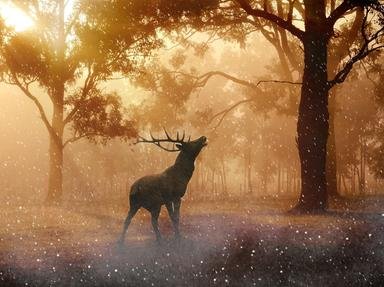Quiz Answer Key and Fun Facts
1. Antelopes are members of the Bovidae family, and are related to cows, sheep and goats.
2. Which is the largest antelope species?
3. How would the dietary habits of antelope with vertical stripes, such as the kudu and nyala, best be described?
4. Which two species are generally not kept on the same game farms, as they will interbreed?
5. Only some species of antelope have horns on both the male and female. Which set shown below, has horns on both sexes?
6. This member of the oryx species is the only one found in southern Africa. It has long straight rapier-like horns. What is its common name?
7. This antelope species delights children, and is generally the first species they can identify. This is because it has a white "ring around the bum", making it look as though it has just risen from a freshly painted toilet seat. Which species is it?
8. What are the three species of duiker found in southern Africa?
9. Which is the least common antelope in the southern African region, occurring only on the Pookoo flats and vicinity on the Chobe river in Botswana?
10. This antelope is common in the north-eastern parts of the southern African region. It has two distinct curved black lines on its rump, and a black line down the middle of the tail. It is a medium size antelope, and the males have long lyrate horns.
Source: Author
51percent
This quiz was reviewed by FunTrivia editor
crisw before going online.
Any errors found in FunTrivia content are routinely corrected through our feedback system.

